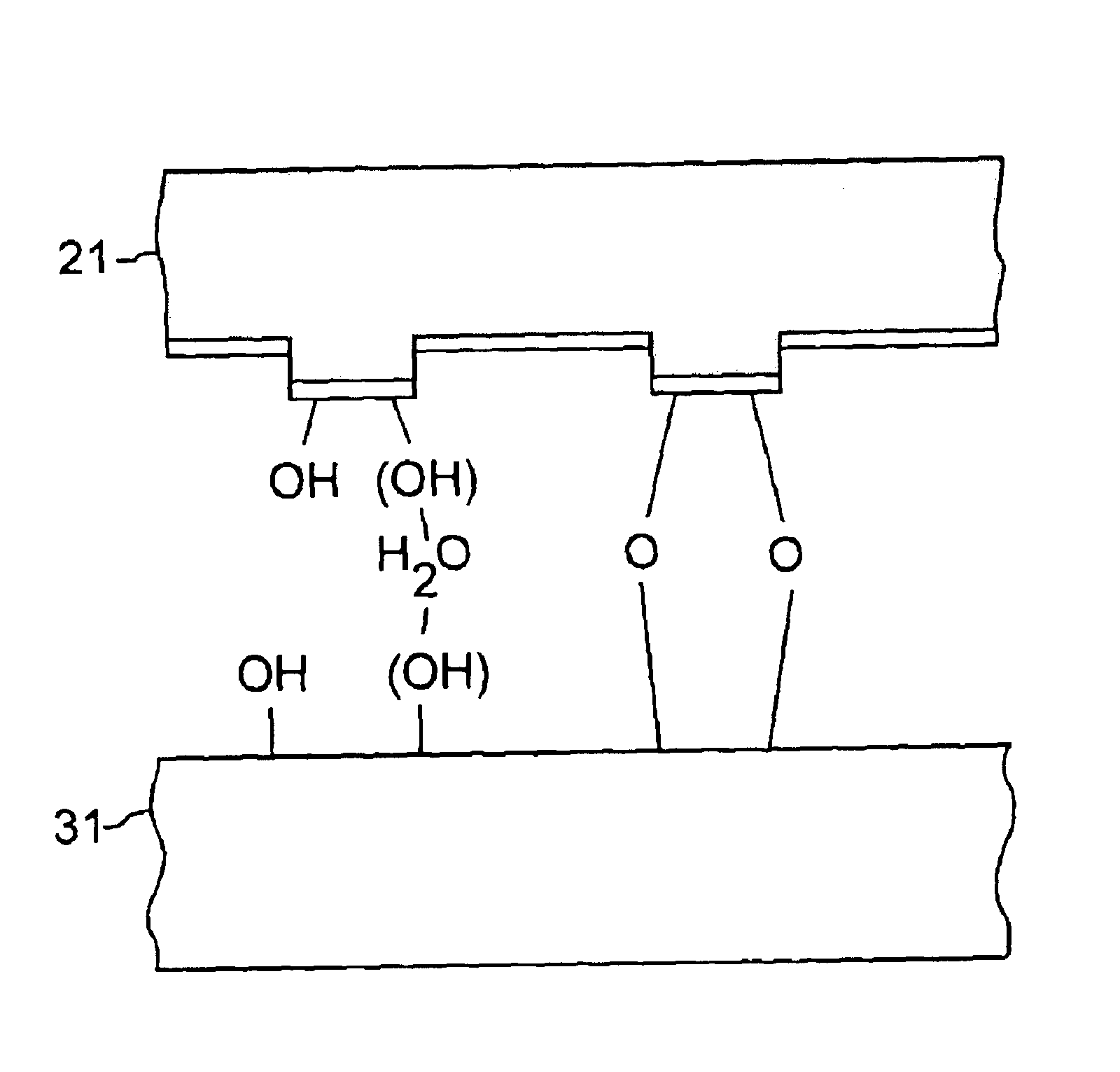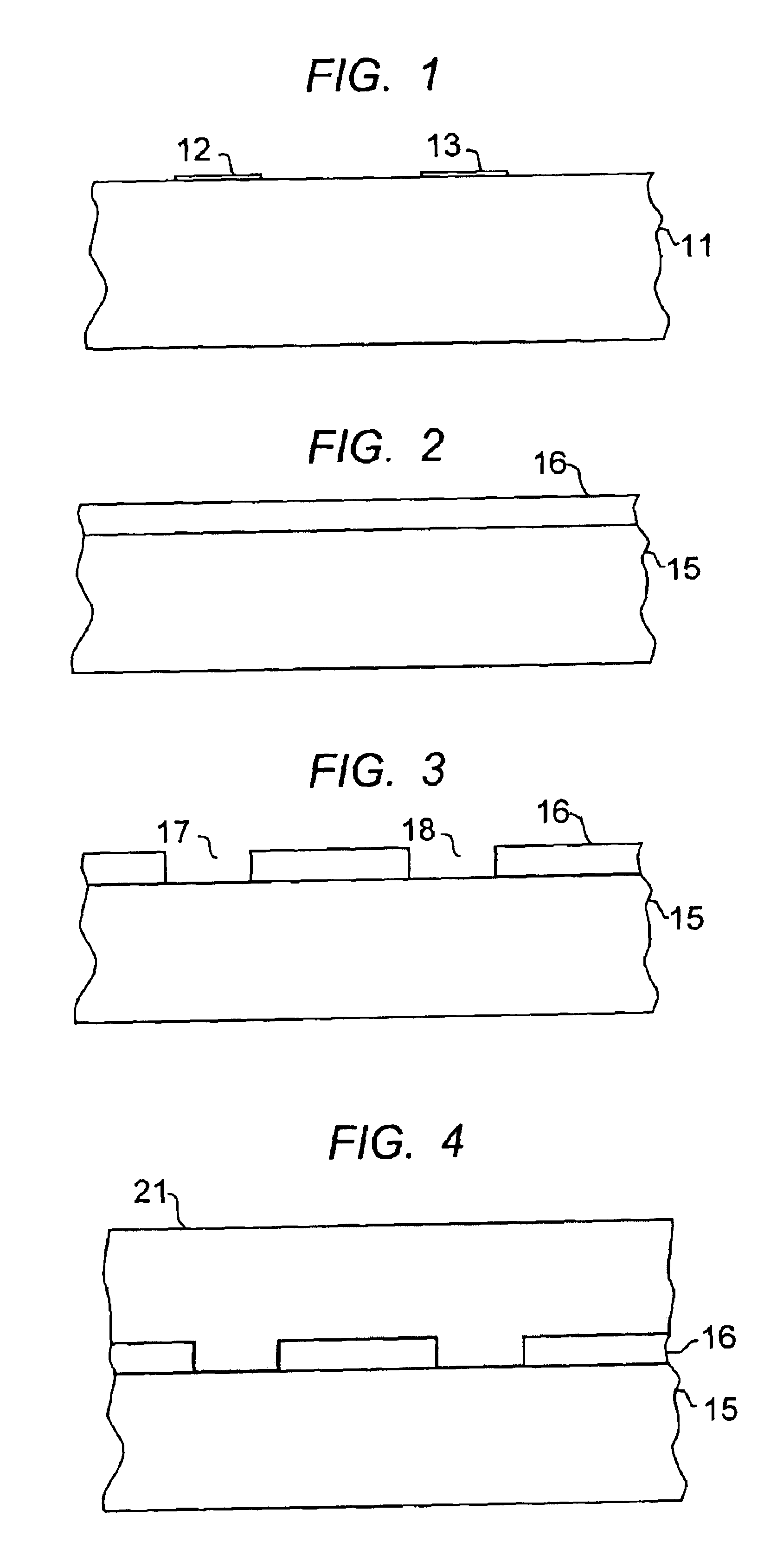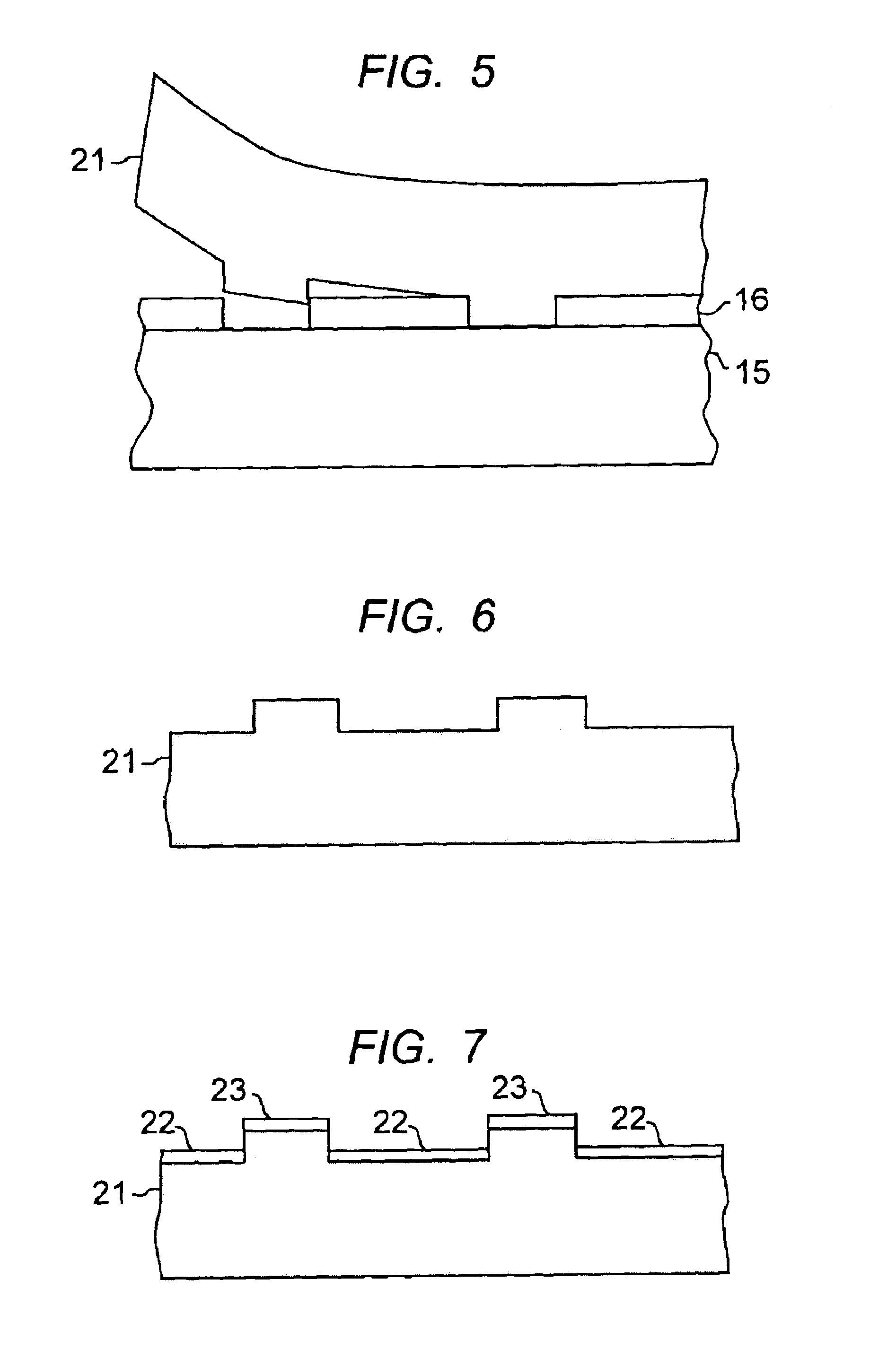Forming nanoscale patterned thin film metal layers
a thin film metal layer and nano-scale technology, applied in the field of nano-scale patterning of metal layers, can solve the problems of complex and expensive systems (established nanolithographic methods, electron beam lithography, deep ultraviolet photolithography, etc., and achieve the effect of high resolution
- Summary
- Abstract
- Description
- Claims
- Application Information
AI Technical Summary
Benefits of technology
Problems solved by technology
Method used
Image
Examples
Embodiment Construction
[0013]The method of the invention involves procedures for using nTP with both elastomeric (i.e. conformal) as well as rigid stamps to pattern thin metal films on both conformal and rigid substrates. For purposes of illustration, the method will be described in the context of its application to plastic electronic systems by fabricating drain and source electrodes and appropriate interconnects for high performance n- and p-channel organic transistors and complementary inverter circuits. Typical steps of the nTP method itself will be described with the aid of FIGS. 1-11. FIG. 1 shows the objective of this example. Flexible polymer substrate 11 is shown with source and drain electrodes 12 and 13 formed on the surface of the substrate by nTP. These electrodes are shown by way of example of other TFT features that can be produced by the method of the invention, or other metiallized patterns useful in a wide range of applications as described earlier.
[0014]The nTP method begins with fabric...
PUM
 Login to View More
Login to View More Abstract
Description
Claims
Application Information
 Login to View More
Login to View More - R&D
- Intellectual Property
- Life Sciences
- Materials
- Tech Scout
- Unparalleled Data Quality
- Higher Quality Content
- 60% Fewer Hallucinations
Browse by: Latest US Patents, China's latest patents, Technical Efficacy Thesaurus, Application Domain, Technology Topic, Popular Technical Reports.
© 2025 PatSnap. All rights reserved.Legal|Privacy policy|Modern Slavery Act Transparency Statement|Sitemap|About US| Contact US: help@patsnap.com



